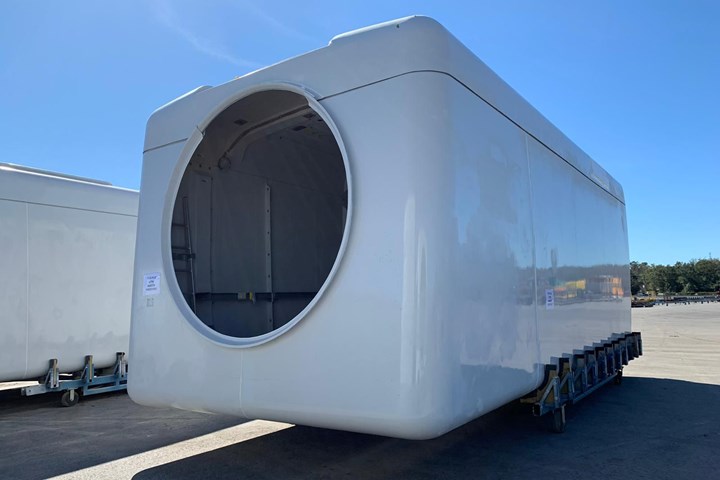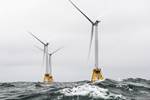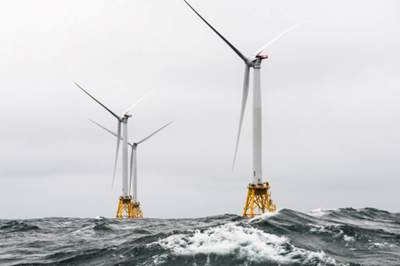Brazilian-founded Blue Wind supplies more than 900 composite nacelles to U.S. wind energy market
The Florida-based manufacturer began its nacelle exporting operations during the pandemic. Now, supporting GE Renewable Energy, Blue Wind strives to surpass the mark of 500 nacelles in 2022.

Composite nacelle. Photo Credit: Blue Wind
Composites manufacturer Blue Wind Technology (Pensacola, Fla., U.S.) strives to become a global reference for the production of wind power components. While the company typically imports nacelle technology from Brazil through international strategic partners, the company has reversed the traditional flow of its commercial relations through the export of a production system to the U.S. instead. This, says Blue Wind, has qualified it as one of three local suppliers of nacelles to GE Renewable Energy (Paris, France), an unit of General Electric (GE, Boston, Mass., U.S.) dedicated to the manufacture of wind turbines.
In Brazil, Blue Wind’s directors have accumulated more than twenty years of experience in manufacturing composite materials used in producing nacelles, compartments that accommodate wind turbine generators. “We learned of a large demand for nacelles from GE in the U.S., a company that we already served in Brazil. So, in 90 days, we set up the factory in Pensacola from scratch,” recalls Jean Zolet, executive director of Blue Wind. The unit’s doors were opened in August 2019, and the first pieces were produced the week of Christmas that same year.
The first complete set of nacelle — part of GE's model 2X turbine — was delivered by Blue Wind on January 23, 2020, the year in which the company produced 343 sets.
“We showed GE that our technology makes it possible to manufacture ten nacelles a week with just one mold, when other manufacturers need two. We also guarantee that our mold will have a lifespan of 1,000 pieces, against the competition’s 500 pieces. All of this, of course, directly impacts the cost of the project,” says Zolet.
Measuring 10 meters long x 4 meters wide x 4 meter high, the nacelles supplied to GE are molded by Blue Wind through an infusion process.
Shortly after the start of the operation and while it was still recruiting local and Brazilian labor — today there are 127 direct jobs — Blue Wind was confronted by the challenges of the pandemic. “We went through a lot of difficulties. Brazilian employees who helped us transfer technology had to quarantine every time they arrived in the U.S. And local employees were also greatly impacted by the health crisis,” says Zolet.
Regarding the North American employees, Zolet pointed out that Blue Wind operation was only able to stand — and still remains today — thanks to the commitment that everyone has shown to the company. “We are so grateful to have found such talented and dedicated people,” he reflects. “They were and continue to be key to Blue Wind's success.”
Despite the pandemic, the delivery of nacelles continued to be carried out and Blue Wind operation began to gain traction. So much so, says Blue Wind, that the contract with GE was renewed in 2021, the year in which the company produced 471 more sets. For 2022, the goal is to surpass the mark of 500 nacelles.
Moreover, in addition to expanding the supply of components to GE and starting partnerships with other wind turbine manufacturers, Blue Wind intends to expand its scope of action to different markets in 2022. The move will be supported not only by infusion, but also by other composite molding technologies.
Related Content
Honda begins production of 2025 CR-V e:FCEV with Type 4 hydrogen tanks in U.S.
Model includes new technologies produced at Performance Manufacturing Center (PMC) in Marysville, Ohio, which is part of Honda hydrogen business strategy that includes Class 8 trucks.
Read MoreJEC World 2023 highlights: Recyclable resins, renewable energy solutions, award-winning automotive
CW technical editor Hannah Mason recaps some of the technology on display at JEC World, including natural, bio-based or recyclable materials solutions, innovative automotive and renewable energy components and more.
Read MoreDrag-based wind turbine design for higher energy capture
Claiming significantly higher power generation capacity than traditional blades, Xenecore aims to scale up its current monocoque, fan-shaped wind blades, made via compression molded carbon fiber/epoxy with I-beam ribs and microsphere structural foam.
Read MoreNCC reaches milestone in composite cryogenic hydrogen program
The National Composites Centre is testing composite cryogenic storage tank demonstrators with increasing complexity, to support U.K. transition to the hydrogen economy.
Read MoreRead Next
U.S. sets offshore energy records with $4.37 billion in winning bids for wind sale
The New York Bight offshore wind sale offered six lease areas totaling more than 488,000 acres won by six bidding companies. Up to seven more potential lease sales have been identified for later this year.
Read MoreVIDEO: High-volume processing for fiberglass components
Cannon Ergos, a company specializing in high-ton presses and equipment for composites fabrication and plastics processing, displayed automotive and industrial components at CAMX 2024.
Read More“Structured air” TPS safeguards composite structures
Powered by an 85% air/15% pure polyimide aerogel, Blueshift’s novel material system protects structures during transient thermal events from -200°C to beyond 2400°C for rockets, battery boxes and more.
Read More
























